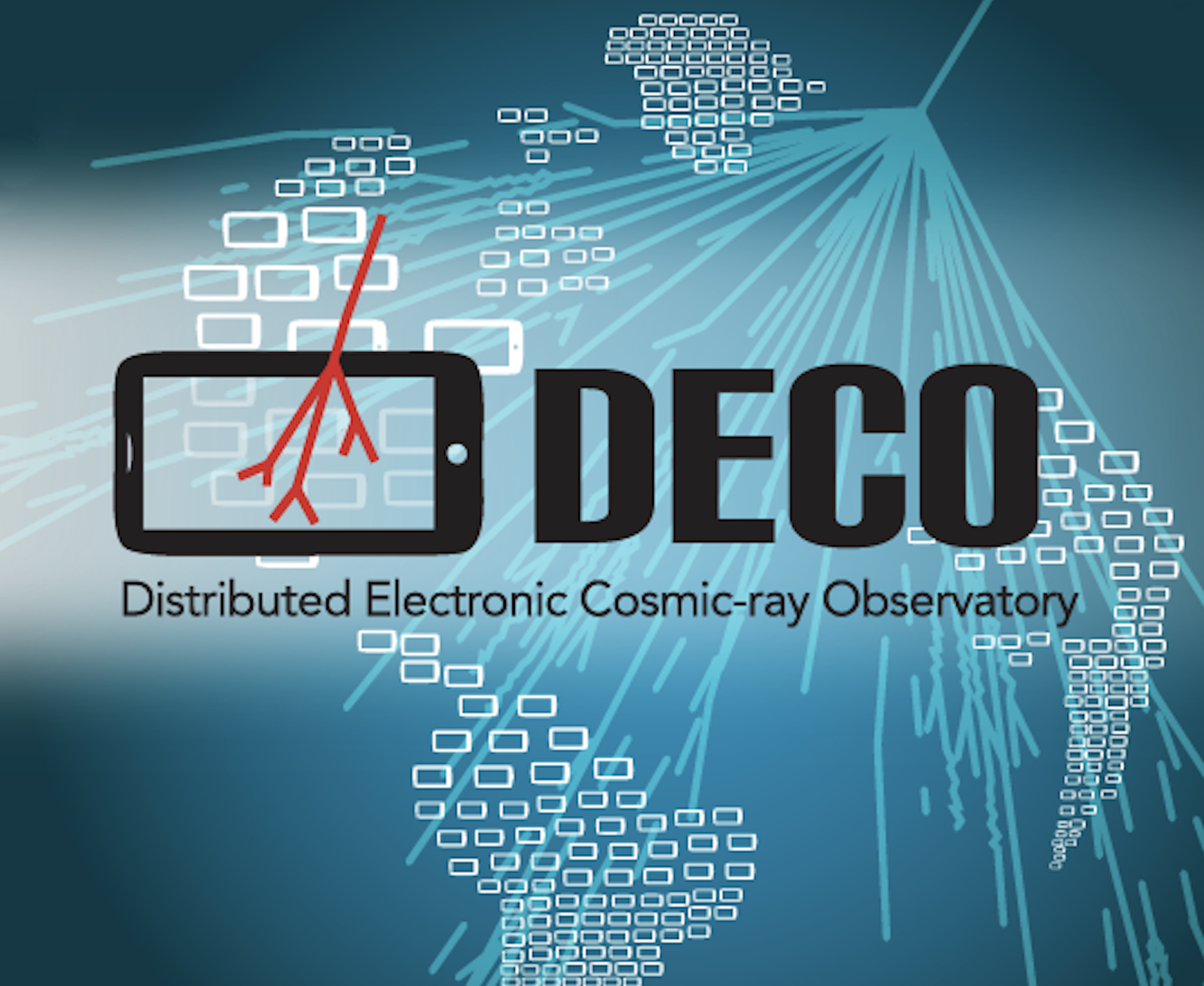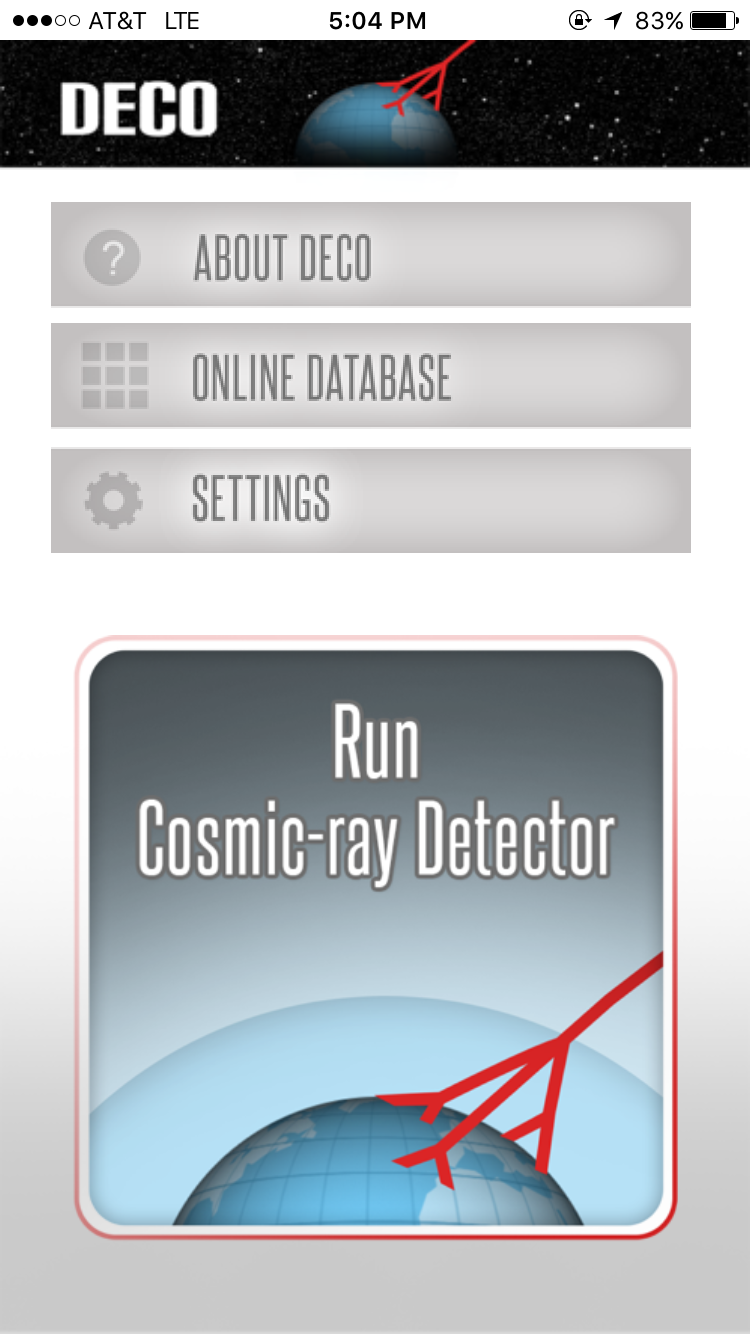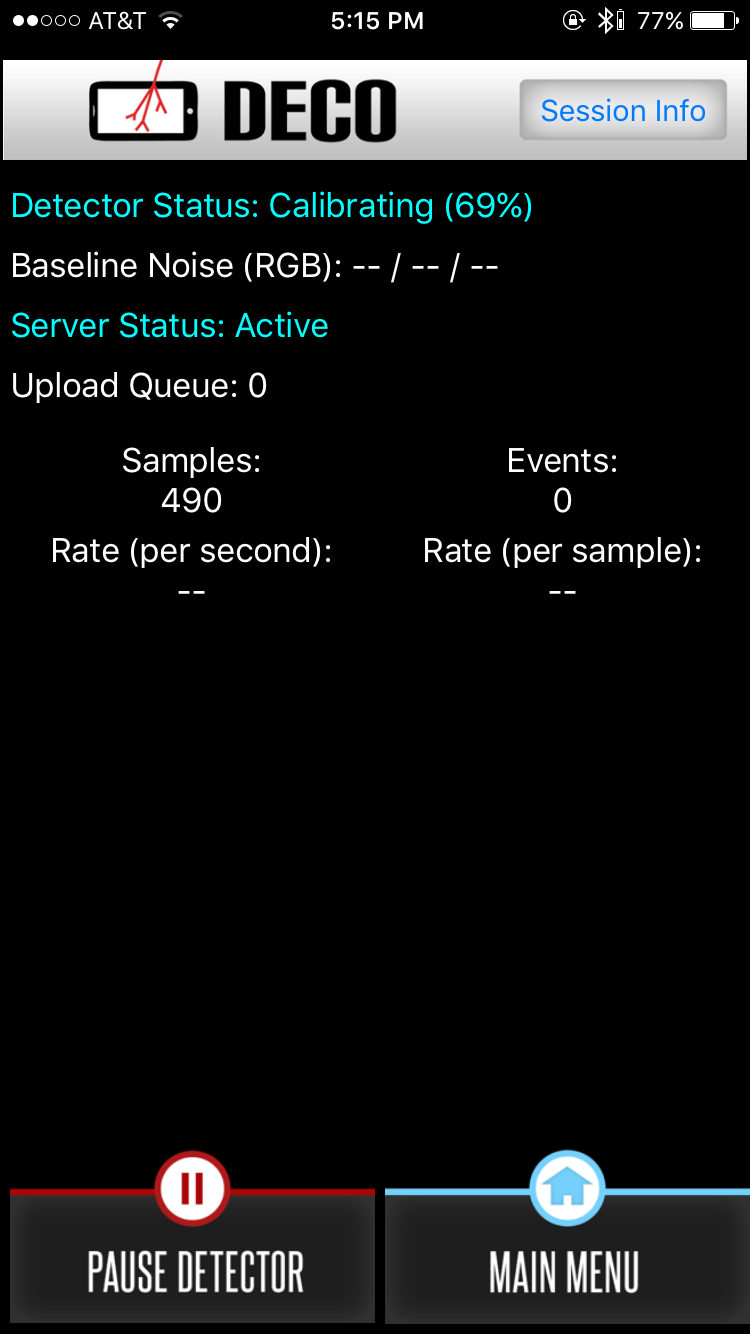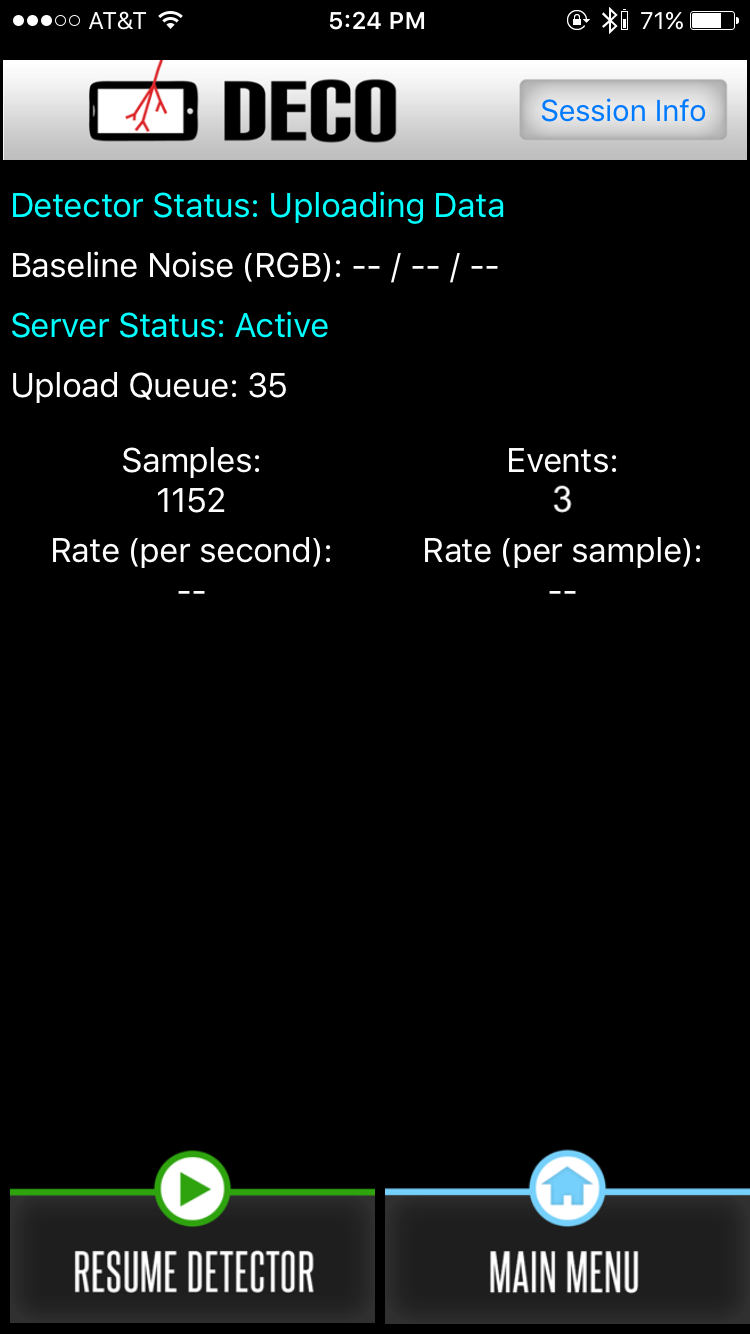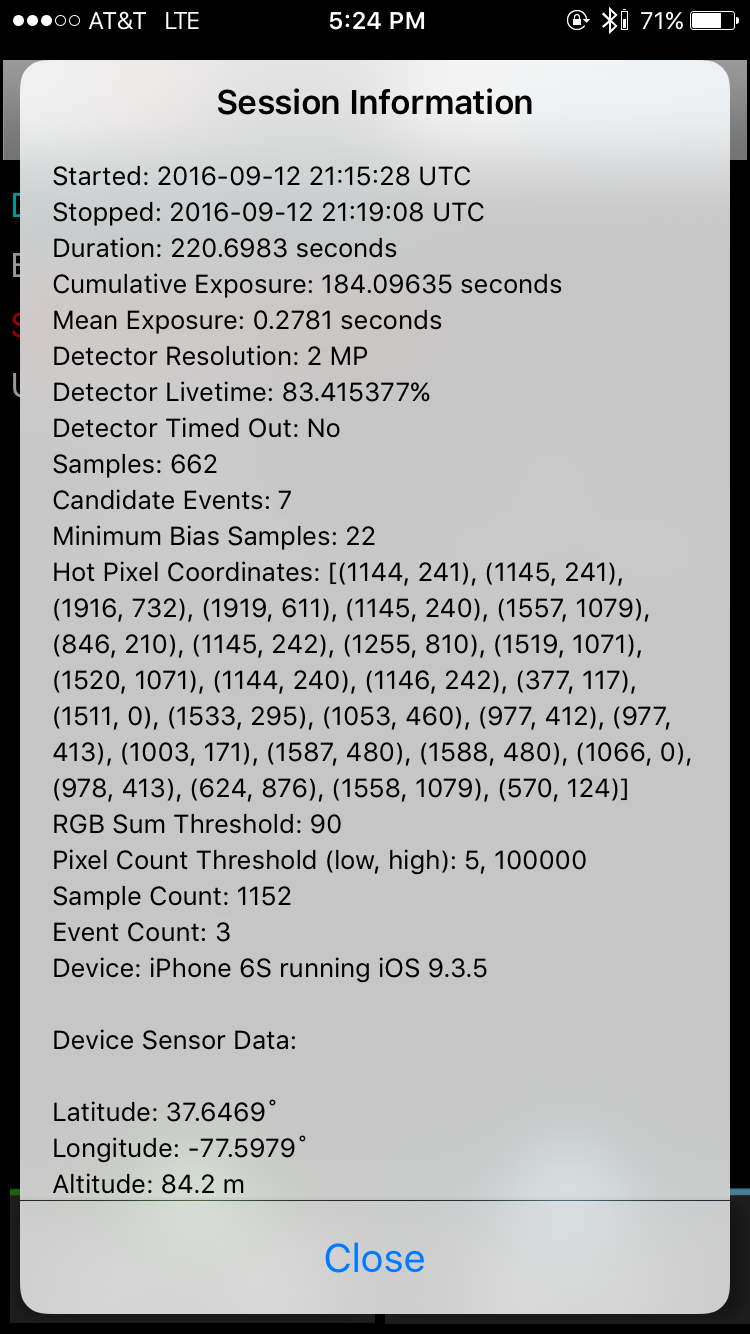
Wisconsin IceCube Particle Astrophysics Center
DECO: the Distributed Electronic Cosmic-ray Observatory
Sponsored by the American Physical Society and QuarkNet (through the Dept. of Energy & NSF)
Advised & led by Professor Justin Vandenbroucke
TLDR: DECO
Problem: Over the past two decades, companies like Google and Apple have equipped entire populations across the globe with compute-intensive, sensor-rich, digital signal processor-equipped devices that run at all hours of the day, collectively communicating wirelessly via protocols such as the Internet and Bluetooth. With there being roughly 10^9 cell phones with cameras in 2015, each with CCD or CMOS sensor area of ~10 mm^2, the total area of silicon across all camera image sensors throughout the world is roughly ten thousand square-meters, greater than any single sensing experiment to date, affording an unparalleled opportunity in citizen science for building a distributed detector of cosmic rays.
Solution & Contribution: Joining the DECO team in June 2015 led by Professor Justin Vandenbroucke — sponsored by the American Physical Society and jointly funded by the NSF & the US Department of Energy — I designed and developed the iOS version of the Distributed Electronic Cosmic-ray Observatory, a global network of smartphones monitoring their respective cameras for signatures of cosmic rays from the farthest reaches of space (e.g., muons, Coulomb scattering from incident gamma rays), deploying through TestFlight to hundreds of beta testers world-wide from CERN to WIPAC to SLAC. My time there led to 2 conference publications and 1 journal publication.
With there being roughly 10^9 smartphones with cameras in 2015, each with CCD or CMOS sensor area of ~10mm^2, the total area of silicon across all camera image sensors throughout the world is roughly ten thousand square-meters, greater than any single cosmic-ray detector alone.
Leveraging the global ubiquity of smartphones' camera CCD and CMOS sensors, the Distributed Electronic Cosmic-ray Observatory has the potential to be the single largest space sensing deployment on Earth, detecting everything from muons to electron Coulomb scattering from incident gamma radiation.
Between 2015 and 2017, I worked with Professor Justin Vandenbroucke and the DECO team at WIPAC to develop and deploy the DECO mobile app, deploying to hundreds of beta testers from WIPAC to CERN to SLAC to detect thousands of cosmic ray events.
The Particle Detector in Your Pocket
DECO in Action
Sample Events: Muon Tracks
Figure showing muon track events detected by DECO iOS and Android. From “DECO Summer 2017 Research Report” (Cassidy Schneider)
Screenshots showing DECO running with the camera covered on an iPhone 6S with the image capture & processing, networking, and UI code I wrote in Swift.
List of Publications
1. J. Vandenbroucke, M. Meehan, J. Peacock, J. Bourbeau, F. Campos, C. Schneider, M. Winter, A. Pizzuto, R. Morgan, B. Gallay, A.L. Simons. “Particle identification in smartphone camera images using the Distributed Electronic Cosmic-Ray Observatory. ” International Cosmic Ray Conference; Madison, WI [2019] (link)
The Distributed Electronic Cosmic-ray Observatory (DECO) is a global network of smartphones that searches images for evidence of cosmic rays and other ionizing charged particles. DECO was released to the public in 2014 and has citizen scientists from 80 countries on all seven continents participating in the project. We previously demonstrated that tracks seen in the DECO data set are caused by cosmic-ray muons by comparing the track length distribution of candidate events in the data set to the expected distribution from a cosmic-ray flux. However, robust particle identification necessary to separate cosmic rays from the radioactive background on an event-by-event basis had not previously been identified. We present a deep learning, computer vision algorithm for identifying and classifying charged particles in camera image sensors. The convolutional neural network was trained using images from the DECO data set and achieves classification performance comparable to human quality across four distinct DECO event classifications. We apply our model to the entire DECO data set and determine a selection that achieves a purity of 95% when applied to cosmic-ray muons and ≥ 90% for all event types. The automated classification is run on the public DECO data set in real time in order to provide classified particle interaction images to users of the app and other interested members of the public. The model and techniques used to develop it are applicable to other smartphone-based cosmic-ray detectors and data sets consisting of images of charged particles from solid-state camera sensors.
2. M. Winter, J. Bourbeau, S. Bravo, F. Campos, M. Meehan, J. Peacock, T. Ruggles, C. Schneider, A. L. Simons, J. Vandenbroucke. “Particle identification in camera image sensors using computer vision.” Astroparticle Physics Journal [2019] (link)
We present a deep learning, computer vision algorithm constructed for the purposes of identifying and classifying charged particles in camera image sensors. We apply our algorithm to data collected by the Distributed Electronic Cosmic-ray Observatory (DECO), a global network of smartphones that monitors camera image sensors for the signatures of cosmic rays and other energetic particles, such as those produced by radioactive decays. The algorithm, whose core component is a convolutional neural network, achieves classification performance comparable to human quality across four distinct DECO event topologies. We apply our model to the entire DECO data set and determine a selection that achieves ≥90% purity for all event types. In particular, we estimate a purity of 95% when applied to cosmic-ray muons. The automated classification is run on the public DECO data set in real time in order to provide classified particle interaction images to users of the app and other interested members of the public.
3. M. Meehan, S. Bravo, F. Campos, J. Peacock, T. Ruggles, C. Schneider, A. L. Simons, M. Winter, J. Vandenbroucke. “The particle detector in your pocket: The Distributed Electronic Cosmic-Ray Observatory.” International Cosmic Ray Conference; Busan, Korea [2017] (link)
The total area of silicon in cell phone camera sensors worldwide surpasses that in any experiment to date. Based on semiconductor technology similar to that found in modern astronomical telescopes and particle detectors, these sensors can detect ionizing radiation in addition to photons. The Distributed Electronic Cosmic-ray Observatory (DECO) uses the global network of active cell phones in order to detect cosmic rays and other energetic particles such as those produced by radioactive decays. DECO consists of an Android application, database, and public data browser available to citizen scientists around the world. Candidate cosmic-ray events have been detected on all seven continents and can be categorized by the morphology of their corresponding images. We present the DECO project, a novel particle detector with wide applications in public outreach and education.
